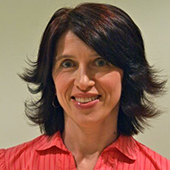The reality is that you don’t need to have the title of a UX professional or consultant to make a contribution in the field of user experience. If you are passionate about making a difference for the users who will eventually use the product you are working on and have the skills you need to do the work, that’s really all you need to contribute to the product’s user experience. Simply decide for yourself that this is what you want to do, no matter what title you happen to have in your organization.
In this article, I’ll give some advice to people who want to work as UX professionals. While most of these tips provide general guidance to anyone who wants to become a UX professional, some apply specifically to technical writers.
1. Forget about your title.
“Leadership is not about position—but passion. It’s no longer about image, but impact.”—Robin Sharma
It may seem challenging to start doing something different as part of your job—particularly if you’ve had your current position for a while. If you’ve been asked to take on some of the responsibilities of a UX professional, you may feel that you already have enough to do in your current job, have been doing it well, and don’t want to venture into the unknown. On the other hand, if you’ve been dreaming of being a UX professional, your current job may have been keeping you so busy that you never find the time to pursue your dreams. Or perhaps you may worry that you might step on other people’s toes if you start taking small steps toward taking on the role of a UX professional in your group or organization.
But the reality is that, once you start acting as a UX professional on a regular basis, your manager, your peers, and other people who are interested in user experience will notice the value that you’re providing, and they will be more than happy to work with you when you bring usability matters to the forefront as part of your day-to-day business.
2. Accept all the help you can get.
“If I have seen further it is only by standing on the shoulders of giants.”—Isaac Newton
As passionate as you may be about user experience, you won’t be able to make the transition to becoming a UX professional all by yourself—particularly if usability is not a top priority in your organization or group. Don’t wait for someone to ask: Would you be interested in taking on the role of a UX professional? You might have to wait a long time for this to happen.
Look around and see who else on your team is interested in usability, user experience, and creating the best possible product for users. Are any other people on your team who share your passion for user experience and would like to team up with you? Or are there any groups in the organization that focus on user experience to whom you can talk? You will be successful as a UX professional only to the extent to which you can effect changes that make user experience and usability high priorities. So go ahead and ask for help achieving your goals.
